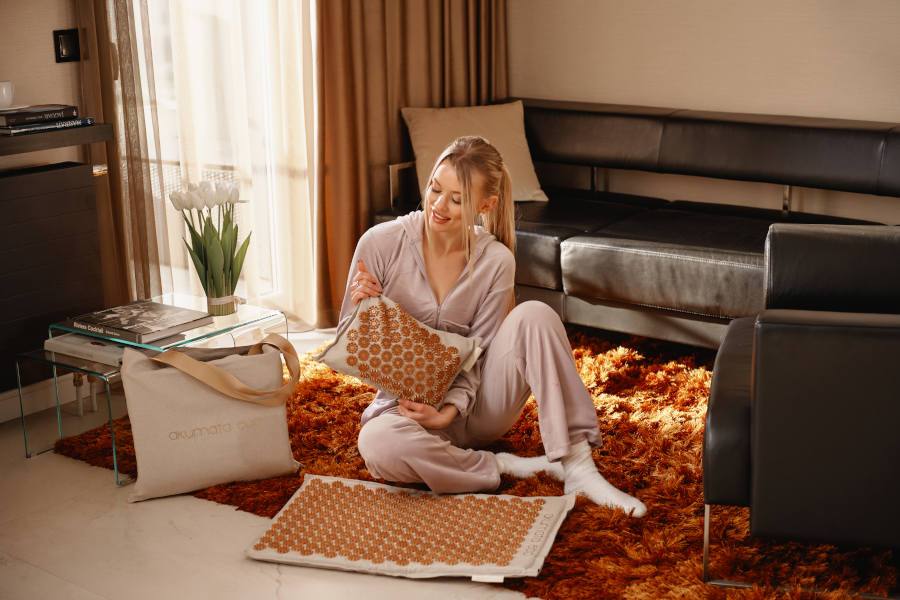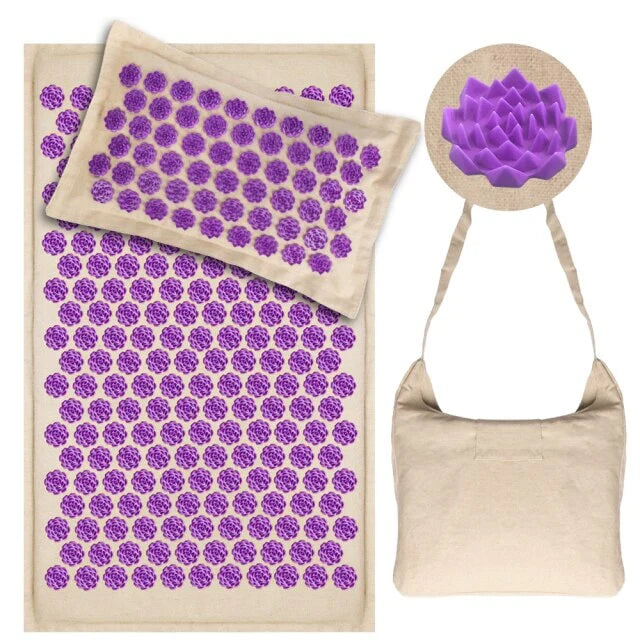A strong method to start labor and ease the discomfort of contractions is acupressure.
In fact, by applying light pressure to a few energy spots (meridians), you can naturally induce labor and encourage the baby's proper placement.
What acupressure points should be activated to help a child enter the world in the greatest possible circumstances? Is acupressure during labor safe for both the mother and the child? We respond to all of your inquiries!

Why use acupressure for childbirth?
Acupressure, which derives its inspiration from Chinese medicine, is a gentle technique that tries to stimulate particular places on the body to considerably enhance the delivery process. There are various advantages:

Reduced labor time
Acupressure is said to help women deliver between 50 minutes and two hours more quickly. In order to better prepare the body for birth, this treatment encourages the circulation of blood (rich in nutrients and oxygen) in the pelvic region.

Decrease the pain of contractions
Without running the risk of interrupting or blocking the contractions, the appropriate meridians can be stimulated to generate an anesthetic effect.

More natural childbirth
Caesarean sections, forceps, vacuum extraction, and other medical procedures can be avoided with acupressure. The infant descends in the proper position and with considerably greater ease.

Triggering labor
Oxytocin, a substance used to trigger labor, is used less when the appropriate acupressure spots are massaged. Natural cervical dilatation leads to the onset of labor.

Partner involvement
Instead of merely standing by and doing nothing, the spouse can actively assist the mother and child.

Less risk
Acupressure significantly lowers the likelihood of problems or adverse effects since it reduces or eliminates the need for medical intervention.

7 acupressure points for a more pleasant birth
Triggering labor with the SP6 point
One of the most popular meridians in Chinese medicine utilized by acupuncturists is the Spleen 6 point because it allows for labor induction if the term is too long. Additionally, it increases the efficiency of contractions while easing their discomfort (as long as they do not modify the cervix).
On the back of your calf, about two inches above the inside of your ankle bone, is where you should apply pressure for birthing. Simply press firmly and continuously for a few seconds with your index finger. After a minute rest, repeat.

Positioning the baby well with the BL60 point
When used to induce labor, lessen the discomfort of contractions during active labor, and reposition a baby who may not be in the best position for delivery, the Bladder 60 point is tremendously powerful.
This labor acupressure point is situated just in the center between the ankle bone and the Achilles tendon, a few inches below the previously stated SP6 point. For a few minutes, gently rub it with your thumb; then, pause for five minutes, and repeat.

Get more effective contractions with the PC8 point
The pericardial point 8 (also known as Laogong) is so effective in starting labor that Chinese physicians refer to it as the "palace of labor." The center of your palm is where this meridian is located.
Simply make a fist, and when it reaches the inside of your hand, it will be at the tip of your middle finger. Then, for a little period of time, massage the area with the opposite thumb while using light pressure.

Turning a baby in a breech position with the BL67 point
To start contractions and assist breech (or posterior) newborns in turning over, utilize the Bladder Point 67. As a result, the process of giving birth is much quicker and less painful.
This is a birth-related acupressure point that is especially important during the early stage of labor. It is situated close to the beginning of your fingernail on the outside of your little finger.
Simply pinch it tightly for a few seconds with your thumb and index finger. Repeat multiple times daily, always separating by a few minutes.

Reducing the pain of contractions with the LI14 point
For a better opening of the cervix, this location on the large intestine is utilized to encourage regular and effective contractions, particularly in the early stages of labor.
It is located right below the joint of your index finger, halfway between your thumb and index finger. Apply light pressure while massaging it with the thumb of your other hand. Up until you see results, keep going for about a minute, pause, and then repeat.

Decreasing the time of delivery with the BL32 point
An acupressure point for childbirth known to shorten labor is the Bladder 32 point.
Additionally, it is thought to encourage better Apgar scores during birth, which are measurements of the newborn's qualities made by a medical expert (appearance, pulse, grimace and responsiveness to stimuli, activity and breathing).
Just above your buttocks, in the dimples of your lower back, is where this acupressure meridian is situated. Place your fingers along your spine and move them downward until you feel a little indentation to locate it.
For a few minutes, apply firm pressure with your thumb while massaging in the direction of your buttocks.

Better manage pain with the GB21 point
Use of this acupressure point during pregnancy is not advised because it can cause labor to start. However, it is particularly effective at increasing the strength and decreasing the pain of contractions when activated during labor.
You can firmly pinch this meridian with your index and thumb while it is located in the middle of your shoulder muscle, right above your collarbone, and massage it for a few seconds with downward pressure.

Acupressure: safe for mother and baby
Of course, a mother's primary concern is for her child's health and welfare. You may relax knowing that acupressure during childbirth is safe as long as the right places are stimulated.
Consult a competent perinatal Chinese medicine practitioner, acupuncturist, or midwife without delay if you want company during this exciting time of childbirth.
If your infant exhibits even the smallest symptom of distress, they will be able to monitor their behavior and cease using acupressure.
Rest assured that this complementary medication just aids your body in healing itself, making it safe for both mother and child.

Our tips for using acupressure at the end of pregnancy
Be warned that it requires accuracy to activate these acupressure spots during birthing, but with the appropriate instructions, your partner can achieve it. Here are some advice and safety measures:
- Stimulate the appropriate meridians as early as possible and/or at the first signs of labor.
- Stay flexible and listen to your senses as some points may change over time (e.g. shift).
- It is preferable to apply direct and firm pressure on the acupressure points rather than trying to massage an entire area.
- If stimulation of an energy meridian causes discomfort or pain, stop using it.
- Do not massage the points too strongly until the work has begun naturally (except in an overtime situation).








